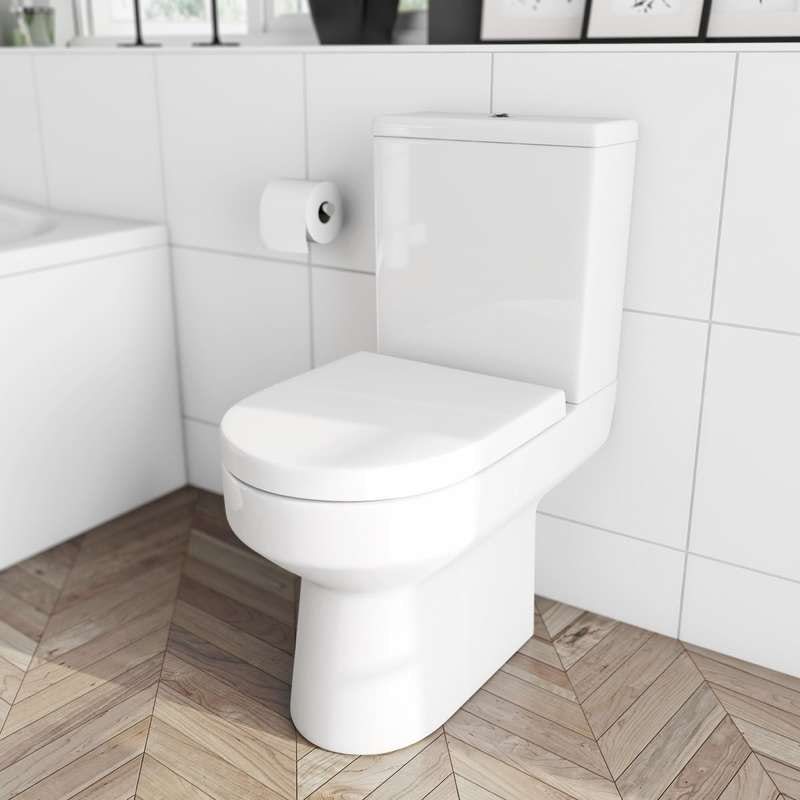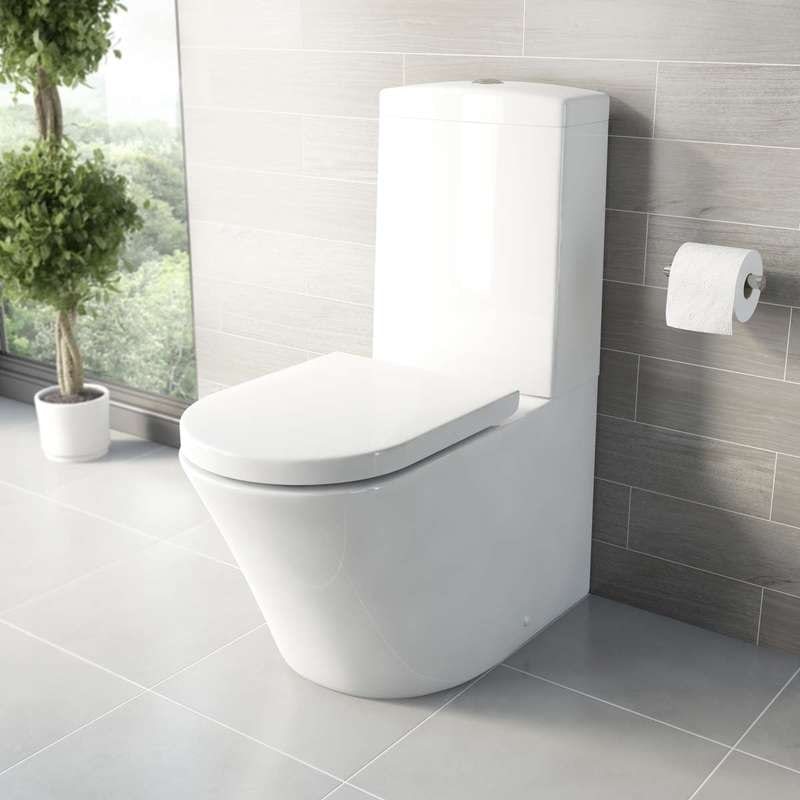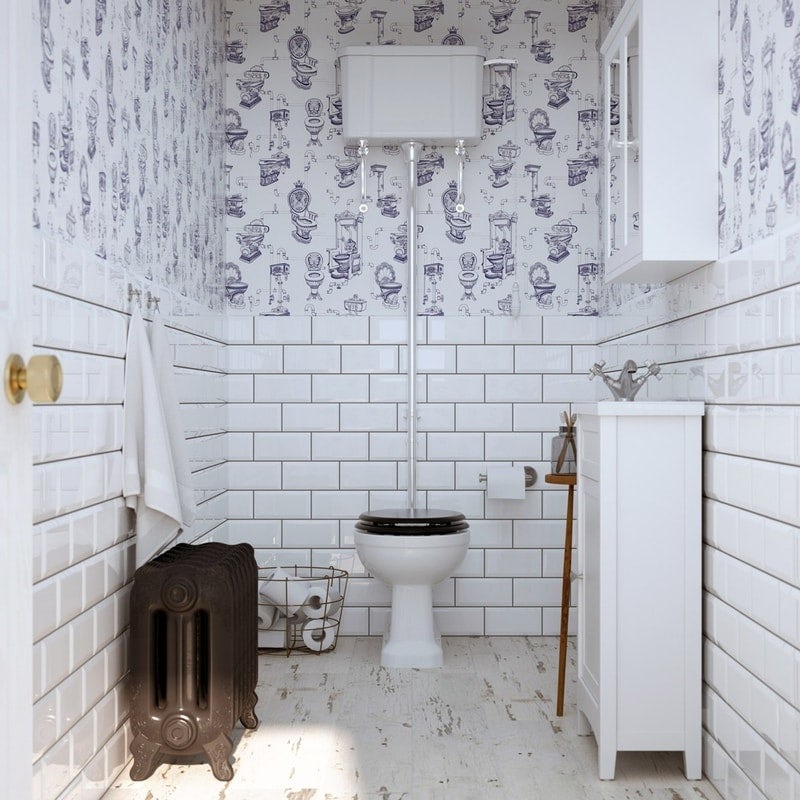The humble toilet is often taken for granted, yet it is one of the world's greatest inventions. In this in-depth article, we examine how your toilet flush actually works.
It was only in 1851 that flushing toilets started to become a mainstay in our homes, and many of us with access to good sanitation and public utilities use them on a daily basis. This convenient way of disposing of our human waste has led to a great increase in public health since its introduction, and is the continuation of an idea of sanitation from as far back as 2000 BC!
But have you ever wondered how a toilet bowl flushes? Many of us don’t even give a second thought to our flush toilets or how they work, but the way in which they operate is both fascinating and extremely intuitive. After learning a bit about how they work, you can then apply some of your knowledge and maybe even perform simple fixes that could get your toilet in running order or keep it working well. So, if you’re interested in learning more about the toilet flush system, keep reading!
The flushing mechanism of a toilet
Before we delve into the inner workings of how a toilet works we need to actually talk about the different types of toilets. From conventional flush toilets and gravity flush toilets to low-flow toilets and dual flush systems, there are many types of toilets that exist. For this breakdown, we will be describing how a flushing toilet system works, as it is the most common toilet mechanism present in our homes and offices.
A few distinct parts of a toilet have different mechanisms to complete one part of the flushing process.
Your toilet forms an integral part of your bathroom suite
The tank
The tank is the part of the toilet and toilet bowl that holds most of the water for flushing and is normally the large, rectangular part of the toilet. The tank of the toilet has a small exit hole at the bottom of the tank, which is plumbed to the rim of the bowl of the toilet. This hole is stoppered by a plug that stops water from flowing through.
The plug is connected to a flush handle or button by a combination of a chain and lever system, which will lift up when you use the handle or button. The lifting of the plug will cause a fast-moving movement of water out of the tank and flush valve. This fast-moving action is powered by the weight of the water forcing itself through the hole, letting gravity take care of the work!
As the water in the tank decreases and empties out, there is a floating valve that will sink over time and will activate the toilet fill valve. When the refill valve is activated, water flows to fill back up into the toilet until the float valve and flush valve seat completely closes the refill valve opening. This then resets the tank for the next flush.
The float and flush valves are calibrated so that the toilet tank will only fill up with the amount of water that it requires, after which point the toilet flapper valve will close. This not only helps to save water flush-to-flush but also means that there is less chance of your toilet overflowing and flooding your toilet.
Close coupled toilets, like this one, have the tank (AKA cistern) on display
The bowl
How the toilet bowl is designed is extremely integral to ensuring that the toilet can flush away all the waste without it coming back up. The key part of the design of the toilet that allows it to function well is the siphon.
The bowl of the toilet will have a bottom recess cut into it, which is connected to a pipe that leads into the floor and then your sewage system. The pipe will be shaped in an inverted-U configuration and the water inside the tube will be level with the water in the bowl prior to flushing. Just a bit above the resting water level in the pipe, there will be a drop-off and the pipe will lead downwards. This part of the toilet is referred to as the siphon.
As the water gets released from the tank, it will fill up the toilet bowl with water, increasing the amount of water in the bowl as well as the water level. As the water level rises, the water in the tubes will be forced to move upwards into the inverted-U section of the pipes, which will then lead it downwards into the siphon and the sewage system. Water is adhesive to itself, meaning that as the water gets pushed through the inverted-U section, the now-falling water will pull other water particles with it, creating a vacuum that will suck all the water down the pipe. This siphon action stops once air gets into the process when the bowl is almost emptied.
This entire system is dependent on the large and rapid influx of water into the toilet bowl. An added effect of designing your toilet this wary and relying on these principles is that it prevents gasses from escaping the closet bend, ensuring that a minimal amount of sewage smell will escape into the room.
Most modern toilets come complete with a dual eco flush, helping you save water
Using this knowledge
Now that you know how a toilet flushes, you can then be prepared and know what is causing an issue when it occurs. For example, if your toilet is overflowing, then there is likely to be an issue with the float valve or the refill valve seal. Or, if the toilet can’t flush, then you might have a clogged or stuck plunger. Short of a crack in the toilet that's causing a leakage, a problem toilet is easy to troubleshoot and diagnose if you have the prerequisite knowledge.
A high level cistern toilet is exactly as it sounds—the cistern is positioned high up, while the flush is chain-operated
Conclusion
With that, we’ve come to the end of this article about how the toilet flush system works. Though simple, there are a lot of physics and mechanisms in play that go into making something as innocuous as a toilet work properly. There are a ton of other styles of toilets that have been developed in recent years, and each has its own different advantages and disadvantages. By gaining some knowledge about how a gravity-flush toilet operates, you would likely be able to conduct simple repairs or at least a diagnosis of what’s going wrong with your toilet, meaning that you can save some money as well!
Find out more about the inner workings of a toilet
If you're still intrigued as to how a bathroom flush works, why not find out more? Here at Victoria Plum, you'll find plenty of handy resources, including a general overview of how a toilet works to how a toilet cistern functions.
Experiencing issues? Check out our toilet troubleshooting guide, discover how to stop your toilet running or discover how to unblock a toilet.
Finally, if you'd like to learn more about toilets in general, why not read our history of the toilet and see how toilets are made?
Shop toilets
If your existing toilet has seen better days, why not replace it? At Victoria Plum, you'll find a comprehensive range of toilets, from traditional designs to the very latest in modern technology, all at low prices. Simply click below to begin browsing.













